(and some sensible alternatives)
Which fish are suitable or unsuitable for the average domestic aquarium is a very subjective topic that could be discussed at length by any given group of fishkeepers and you’d be unlikely to reach a definitive decision! The reasons that someone might deem a particular species best avoided are many and varied, with the adult size being a serious factor.
As with all animals, providing the appropriate living conditions and husbandry is important to ensure that your chosen species is going to thrive under your care. We strongly advise you to research thoroughly before deciding what species you’d like, and will be able, to keep. If you consider any of the species, or any of the alternative species, mentioned below please be sure that you will be able to provide for them appropriately and have fully researched all their needs.
The following article by Simon Morgan takes us through some of the more popular species available in the hobby and offers suggestions for alternatives more likely to succeed in the average domestic aquarium.
I’m going to make a big assumption for the purpose of this article; you are relatively new to fishkeeping and you have an average size tank. The average size aquarium has actually come down over the last few years. Nano tanks have become extremely popular and it’s not uncommon to see tanks in the region of 20 to 50 litres for sale. However, I still believe that the most popular sizes are between 60 litres and 150L and are typically 60 to 100cm long. This article is aimed at people with tanks of that sort of size. If you have a 300 litre aquarium or even bigger, it’s not aimed at you.
Common Plec, Pterygoplichthys pardalis
It seems like every aquatic retailer wants to sell you something to eat the algae or clean the substrate, but let’s get that out of the way first: that’s your job. If you have left over food, you are over feeding. In most of my tanks it rarely reaches the bottom anyway. And if you have algae, there are better ways to deal with it. Please see our Algae Eaters article for more information.
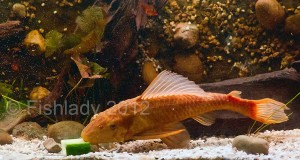
The Common plec and similar species such as the Sailfin or Gibbiceps plec (Pterygoplichthys gibbiceps) are far too large for the average aquarium. So just don’t buy one, it will outgrow your tank despite the myth you may have been told about fish growing to the size of their tanks.
The amazing thing about this is that there is a really obvious alternative that a lot of shops seem to overlook; the Bristlenose plec, (Ancistrus sp.). They actually look pretty similar at first glance but over time a male Ancistrus develops a lovely noseful of bristles, quite handsome if you are a female Ancistrus. Furthermore, there are several colour varieties and even long-finned versions of this species.
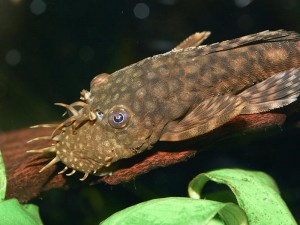
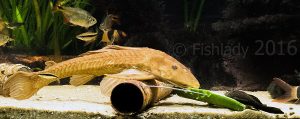
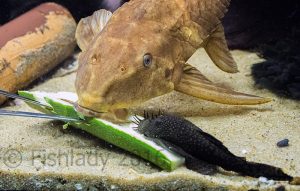
If the Ancistrus doesn’t do it for you there are many closely related species which suit the average tank, Clown plecs (Panaqolus maccus) and the Hypancistrus group come to mind. Please, google away, they are a much better choice.
Silver Shark or Bala Shark, Balantiocheilos melanopterus
Size is not the only issue when you choose this fish, you really ought to have a shoal too. And when you consider that they can reach over 30cm, six of these will not go into 100 litres. Buying just the one isn’t really an option either, they are a very active species that need room to swim and a solo specimen can become quite skittish and even aggressive.
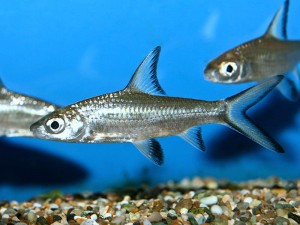
But if you are looking for something silvery or shiny with a bit of “wow” factor, consider a shoal of Diamond tetras (Moenkhausia pittieri), Red-Eye Tetras (Moenkhausia sanctaefilomenae), Silver Hatchets (Gasteropelecus levis), or even Neon Rainbowfish (Melanotaenia praecox), or a pair or trio of Moonlight Gourami (Trichopodus microlepsis).
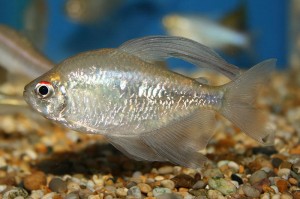
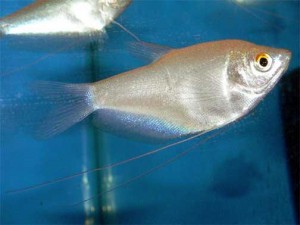
The above also applies to several other large, silver shoaling species such as Silver Dollars (Metynnis hypsauchen) and Tinfoil Barbs (Barbonymus schwanefeldii).
Clown Loach, Chromobotia macracanthus
OK, I have to admit that these are pretty hard to resist. Awesome characters, full of colour, relatively common and fairly cheap. What’s not to like? Like the Silver Shark though, they get really big and need to be in a shoal. They need and deserve a large tank.
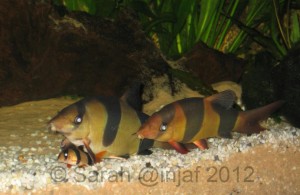
I also believe a lot of aquatic retailers offer them as a solution to pest snails. This might be true, but if you have pest snails you probably need to reduce feeding and increase maintenance. Besides, Assassin snails can deal with it and there are treatments available too.
If you want an attractive bottom dweller with character, take a look at the Corydoras family. Corydoras sterbai is a particularly nice one but there are loads available. Other species you could consider include Kuhli Loach (Pangio semicincta) and Bumble Bee Gobies (Brachygobius doriae).
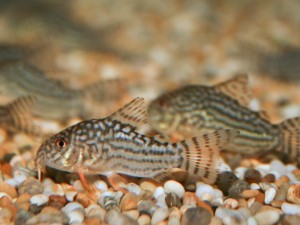
Siamese Fighting Fish, Betta Splendens
Surprised? The Betta is a really popular fish but I honestly believe it is one of the most neglected animals in captivity. Too often they are given inappropriate tankmates that harass them and tear their fins. Equally, they can be too aggressive for their tankmates. More often than not they are kept in a container that is too small and too cold.
Added to that, they are quite inbred and catch diseases easily as a result, and they much prefer soft water.
Given a suitable sized tank to themselves, with warm, soft water, they can thrive, but more often than not they live very short lives.
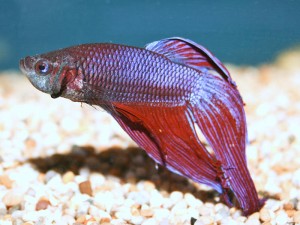
Alternatives? I’m a big fan of Paradise Fish (Macropodus opercularis). They need a slightly bigger tank than a Betta but will thrive in a range of water conditions; hot/cold, hard/soft, they aren’t fussy. Like the Betta, they are more manageable in their own tank but can be mixed with other fish, with care. If you prefer something more peaceful but equally dramatic consider the Pearl Gourami (Trichopodus leerii).
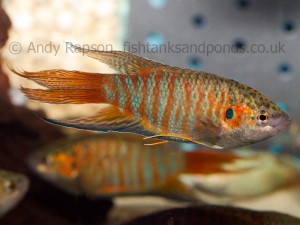
Ram Cichlid, Mikrogeophagus ramirezi
This might also come as a surprise. What’s wrong with Rams? Again, when kept in appropriate conditions these fish are stunning and may reward your fishkeeping skills by breeding. However this species, like the Betta, suffers from more than its fair share of inbreeding. I also suspect they are born and raised in a soup of antibiotics and hormones. This means they are weak and sickly by the time they are exposed to the normal bacterial load of a typical Aquatic retailer. They also need soft, warm water. And they may survive in hardwater, they might be fine or OK but that’s not the same as thriving. When you see a good specimen, in good health being kept in good conditions, you’ll know what it looks like. There’s also some evidence that they don’t tolerate nitrates very well either.

If you want to try a dwarf cichlid the Bolivian Ram (Mikrogeophagus altispinosus) is a lot hardier, prefers slightly cooler temperatures and tolerates harder water. Other species you might consider are the cockatoo cichlid (Apistogramma cacatuoides) and Apistogramma macmasteri (often mis-labelled as A. viejita); the Dwarf Flag Cichlid (Laetacara curviceps), the Golden Eye Cichlid, sometimes called the Golden Dwarf Cichlid (Nannacara anomala) and the Keyhole Cichlid (Cleithracara maronii). All cichlids become aggressive when spawning and this should be taken into account if you plan to keep more than one.

Oscar, Astronotus ocellatus
Oscars are really popular and it’s no surprise why. They are full of character and colour and form a real bond with their keeper; they are the ultimate wet pet. They are extremely appealing in the Aquatic shop, showing off at the front of the tank and wagging their tails like little puppies. Be warned though: that puppy is going to turn into an underwater Rottweiler! Not only will they reach 30-40cm in no time at all, they will eat most of their tankmates and will set about destroying the contents of the tank. It’s not unknown for them to smash a heater against the tank glass!
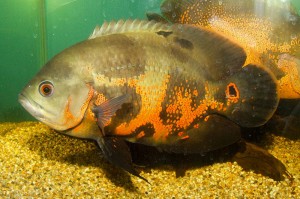
Another thing to consider is their life-span. These fish could live for fifteen years or more, so buying one is a long-term commitment.
There are thousands of Cichlid species and hundreds are available in the trade, Cichlid keeping is almost a hobby within a hobby. If you want to get into Cichlids I suggest doing a lot of research before taking the plunge.
That said, species like the Blue Acara (Andinoacara pulcher), Kribensis (Pelvicachromis pulcher) and Convict Cichlids (Amatitlania nigrofasciata) have all the character and colour of the Oscar without their destructive nature and stay quite small. Be warned though: Cichlids are not peaceful community fish and are especially aggressive when breeding.
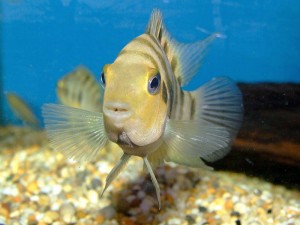
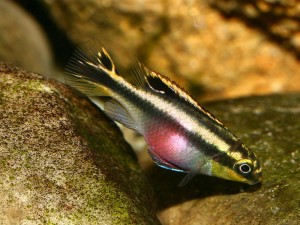
Black Ghost Knifefish, Apteronotus albifrons
These grow to 50cm! Fortunately they have a distant cousin, the African Black Knifefish, Xenomystus nigri, that only reaches 8 inches or 20cm. They still need a reasonably large tank though ~120cm long and at least 200 litres capacity.
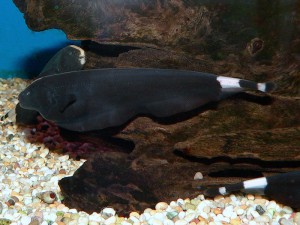
If it’s the black colouring and unusual fin shape that draw you to the Black Ghost, you could consider some Black Widow Tetra (Gymnocorymbus ternetzi). These are also black, and they have a very large and long fin on their underside which looks reasonably similar to that of a knifefish.
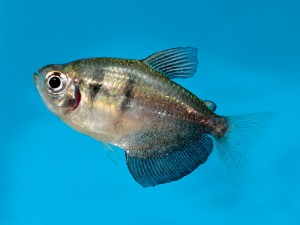
In brief, a few others to avoid:
Finicky feeders such as Elephant-nose fish, Gnathonemus petersii
Territorial yet sociable, the Elephant-nose fish is also secretive, difficult to feed and needs a soft sandy substrate. Even a small group needs a large tank but single specimens will usually hide and not feed, therefore slowly waste away. Some individuals are known to do well in captivity but sadly most do not survive.
Possible alternatives: Red-tailed Black Shark (Epalzeorhynchos bicolor), small Synodontis species (this is a link to a list of Synodontis species, check the profiles for more information and to find one suitable for you). These still need to be chosen with caution however as Red-tailed Black Sharks and Synos can be unsuitable for community set ups.
Figure Eight Puffer, Tetraodon biocellatus
Boisterous and nippy, they eventually need brackish water and a steady supply of snails or shellfish in order to keep their teeth in good condition.
Possible alternative: Amazon Puffer (Colomesus asellus) or Dwarf Puffer (Carinotetraodon travancoricus). Both are true freshwater fish but special care is needed.
Giant snakehead, Channa micropeltes
The clue is in the common name, these are the giants of the snakehead world and as such are highly unsuitable for the average domestic aquarium. If snakeheads appeal to you there are far more suitable species available instead, such as the Rainbow Snakehead (Channa Bleheri).
Clarias catfish, Clarias batrachus
Cute when babies but monstrously sized as adults, I don’t know why people buy them when you could have a delightful Pictus Catfish (Pimelodus pictus) instead.
A final note …
If you are reading this far I encourage you to keep going. I hope you will consider the alternative species I have suggested and will follow the links and do further research. When choosing your fish, consider their pH and hardness preferences, the temperature at which they normally live, their typical behaviour and eventual size. Try to keep them within their preferences and you will find fishkeeping relatively easy.
Further reading:
The Big Fish Campaign
Tankbusters
Seven fish best left in the wild, Practical Fishkeeping
Ten fish the trade might be better without, Practical Fishkeeping
Do fish grow to the size of their tank?
Author: Simon Morgan
Photos courtesy of fishtanksandponds.co.uk, Fishlady and INJAF




